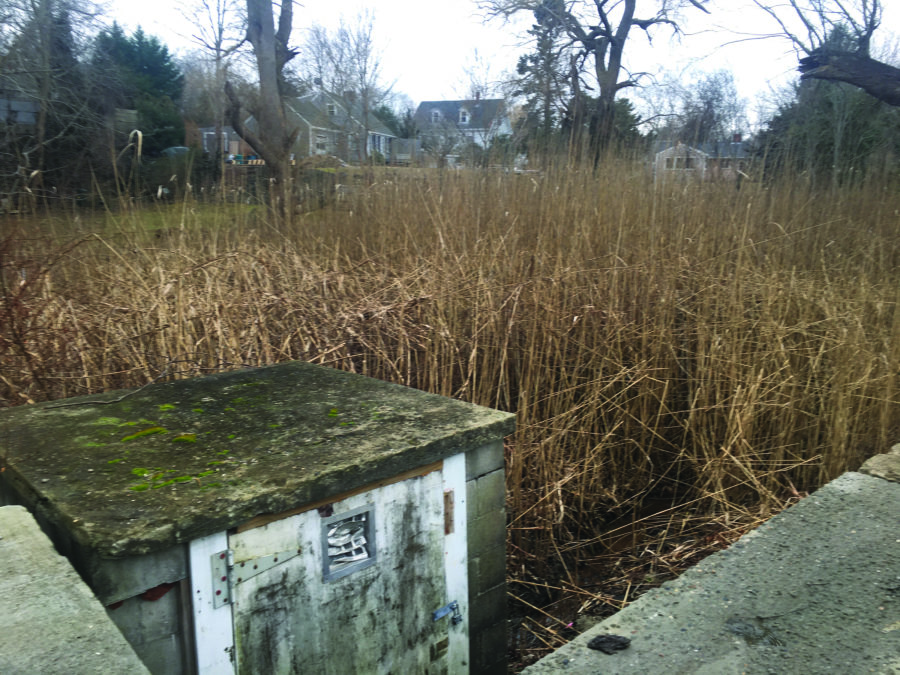WELLFLEET — Back in 1970 the Wesley’s Swamp Drainage Committee installed a pump in a wetland to prevent flooding downtown.
Fifty years later, the pump in Wesley Swamp (now called “Wesley,” not “Wesley’s”) is in violation of the state Wetlands Protection Act and the town Environmental Protection Bylaw. The pump also threatens the protected spadefoot toad that breeds there in the early spring before the wetland dries in the summer. Newts, salamanders, and peepers also live in the so-called swamp, said Deborah Freeman, chair of the conservation commission.

The one-acre wetland is hard to recognize as little more than a sliver of mud and phragmites extending behind Main Street. But it’s officially certified by the Mass. Natural Heritage and Endangered Species Program as a vernal pool. It is not connected to groundwater, said Hillary Greenberg-Lemos, Wellfleet’s health and conservation agent.
The Wellfleet Conservation Commission has been studying the swamp since 2013 to figure out if there could be a way to get rid of the pump and allow the wetland to exist in a more natural, healthy state.
It’s surrounded by homes, businesses, lawns, and parking areas and has been filled in over the years by many property owners, including the Catholic Church in the early part of the 20th century. The church is now Wellfleet Preservation Hall.
After years of study, town health and conservation officials have determined the one negative consequence of removing the pump that drains the wetland would be possible flooding of Preservation Hall’s backyard.
“We are concerned,” said Janet Lesniak, Preservation Hall’s executive director.
She and other abutters have a good idea what will happen if the pump is simply removed. In the nine years since the nonprofit took over the former church, the pump has broken at least four or five times.
“We’re the first ones to know, because we have a lake in the backyard pretty quickly,” Lesniak said. “Inevitably it’s in winter, and it’s not swimmable.”
Lesniak said Preservation Halls wants “to be part of the solution.”
In 2018, town meeting approved $37,000 in Community Preservation Act funds to plant a garden and install a fence in the hall’s back yard. That work has been done. The land is actually town-owned and is maintained as a public park, Lesniak said.
It’s unknown if a berm or a wall to protect the property from flooding would require removal of the garden.
“It’s always a challenging compromise between the community and the natural world,” Lesniak said.
Like many wetlands all over Cape Cod, Wesley Swamp was filled and pumped to prevent flooding and add to the land usable for human activities. For now, it looks like the pumping will continue.
On Jan. 28, the Conservation Commission presented its conclusions to the select board, saying Preservation Hall’s back yard would be affected, and that an engineer or consultant should take a look at the situation to see if a sheet pile wall or berm would help.
The commission did not, however, even go so far as to ask the select board to take any action on hiring a consultant.
“I left that meeting last week feeling much better,” Lesniak said, with select board members concerned about any impact on the Hall, “each one making a point in saying that Preservation Hall is good for the community.”
